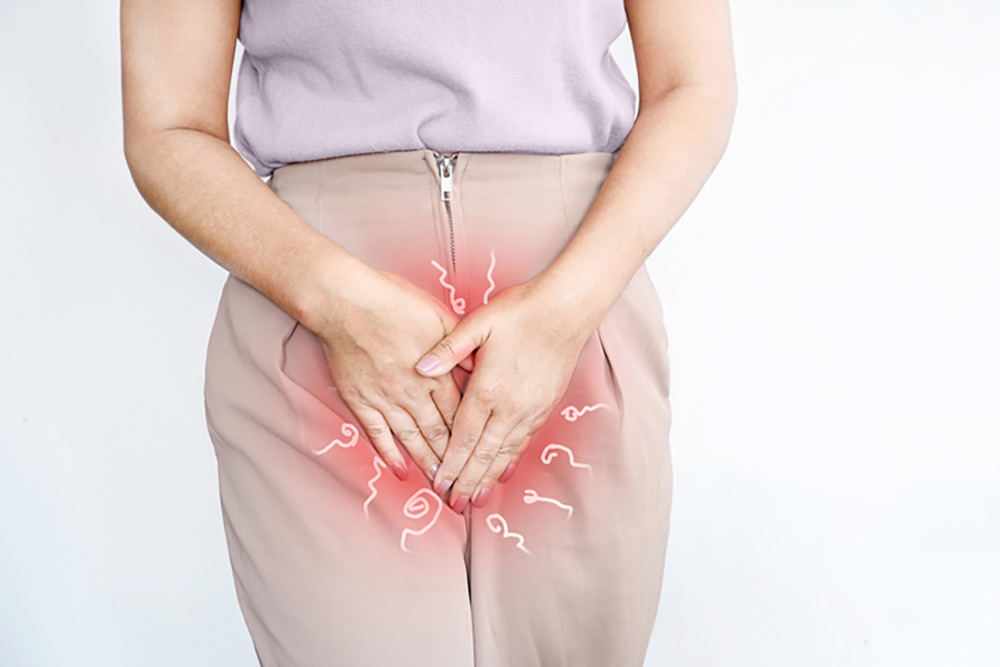
iStock
By Mary Carpenter
MOST WOMEN no longer need Pap smears after age 65, according to CDC guidelines. But continuing gynecological checkups through the 70s can help address common vaginal post-menopausal symptoms—such as dryness that can cause pain during intercourse, as well as occult hematuria (blood in the urine). More importantly, these exams should check for vulvar conditions—from the simply bothersome to the more risky.
Lichen sclerosus is a vulvar disorder—found in a Danish study to have increased seven-fold in recent years—that can cause severe itching and, if untreated, lead to tightening and fusing of the skin, and in rare cases to cancer. Yet, gynecologists often miss the signature patchy white skin—in part because cases have only increased recently, but also because medical training has traditionally focused on the internal organs of the vagina but ignored the vulva—the external female genitals including the labia and clitoris. (Sclerosus is the adjective form of sclerosis—referring to the stiffening or hardening of tissues or anatomical features.)
“By some estimates, one in 30 older women has lichen sclerosus,” according to Harvard Health. “Itching is usually the first symptom, and it may become severe enough to disrupt sleep and other activities [with physical signs that include] white (sometimes crinkly or shiny) patches. Some may contain tears or red areas from bleeding (often the result of scratching), and these areas may be painful and sting.”
“Medical education has consistently emphasized female reproductive anatomy and ignored vulvar anatomy, particularly clitoral nerve anatomy,” writes Dallas plastic surgeon Paul Pin. “[It’s] a clear indication that medical education has historically seen women as ‘baby machines’ and not as sexual beings.”
“Less than 19 percent of vagina owners [may] orgasm from penis-in-vagina sex alone”—according to a 2017 study reported by Healthline. (“Vagina owners” refers to people assigned female at birth.) “Estimates suggest that the clitoris has 8,000 nerve endings [while inside the vagina] the number pales in comparison.”
The uterus, vagina, cervix, fallopian tubes, ovaries, bladder and rectum are all on the list of “pelvic areas” to include in the gynecological exam, according to WebMD—but not the vulva. An additional problem, many skin conditions, such as eczema and psoriasis, are more familiar when they appear on other parts of the body—with lichen sclerosus often arising on the back and chest—but harder to recognize on the vulva. Eczema on the vulva can form crusts, and scratching may lead to the thickened skin of lichen simplex chronicus (a different condition); while psoriasis on the vulva can cause pink patches that may develop into lichen sclerosus.
With postmenopausal women at higher risk for lichen sclerosus, “low levels of the hormone estrogen may be a cause,” according to YaleMedicine. Lichen sclerosus (LS), however, most often falls into the category of autoimmune disorders—though the Yale site also refers to evidence that “suggests a genetic predisposition in some people, for whom the condition may be triggered by injury or trauma to the affected area”—or by environmental factors.
Uncertainty about the origins of LS can complicate the decision of where to turn for diagnosis— with the Lichen Sclerosus Support Network listing dermatologists, gynecologists and urogynecologists—and the choice of specialist may play a role in treatment choices. Topical steroid ointments are usually the first-line treatment, while both topical and oral immunosuppressants can reduce skin inflammation. And even after symptoms clear, Yale dermatologist Alicia Little recommends “a long-term maintenance treatment regimen [to] reduce scarring and may prevent progression to skin cancer.”
The Mona Lisa laser is a treatment recommended mostly in private gynecological practices—despite the statement in a British dermatology review article that, even for patients who don’t respond to steroid treatments, “the best second‐line therapy is unclear.” These dermatologists, based in London and Nottingham, describe laser therapy’s “uncertain efficacy”—while noting that “its use is gaining popularity in the private sector.”
The Danish lichen sclerosus study—comparing biopsy-verified LS incidence from 1997-1998 with that from 2021-2022—found “the rate increased approximately seven times, from 4.9 to 35.7 per 100,000 person-years.” Clinical guidelines recommend vulvar biopsies for LS only in cases of diagnostic uncertainty, and for a few other reasons—but clinicians may be performing them more often due to “increasing awareness of the malignant potential of vulvar LS,” according to the researchers. They also note the coincidence of increases in vulvar LS—with the “etiology…hypothesized to be autoimmune”—along with other autoimmune diseases, “with several possible explanations including environmental factors.”
For check-up gynecology visits after age 65, forgoing the Pap test is safe “if you have had several tests in a row that didn’t find cancer within the previous 10 years, including at least one test in the previous 5 years,” according to CDC guidelines—which specify having “3 normal tests in a row.” The guidelines also point out that because “most cervical cancer is caused by the human papillomavirus,” screening tests can include “a Pap test, an HPV test, or both tests.”
I am only slowly learning about the multiple benefits of supplementing post-menopausal estrogen—both topically and systemically—along with the many negative health effects of stopping routine hormone replacement therapy (HRT), based on a flawed 2002 study. Just last week, physicians coined a new term for menopause-related effects on bones and joints, the musculoskeletal syndrome of menopause—that includes loss of muscle mass, loss of bone density and progression of osteoarthritis—to join the earlier collection, GSM (genitourinary symptoms of menopause) that may one day include lichen sclerosus.
—Mary Carpenter regularly reports on topical subjects in health and medicine.

So important to highlight – thank you!!
Thank you Mary…this is important information that I didn’t know anything about…